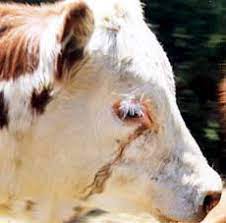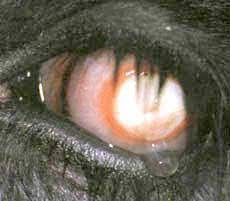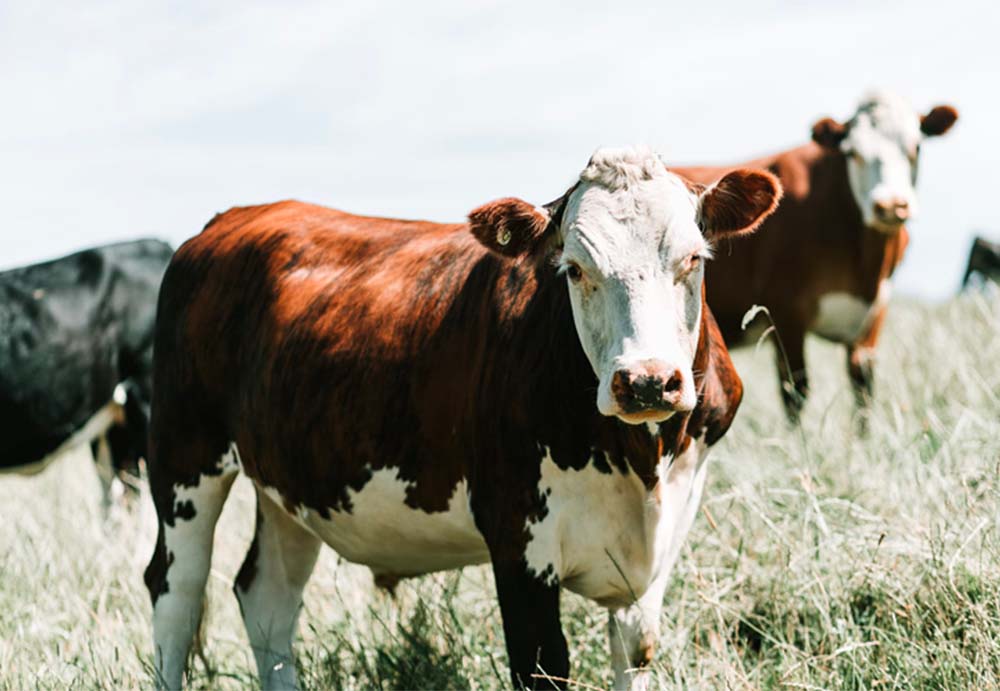What is Pinkeye?
Pinkeye, or infectious bovine keratoconjunctivitis (IBK), is a contagious infection of the eye caused by the bacterium Moraxella bovis. The bacterium produces a toxin that causes aggressive inflammation of the eye, often resulting in short term or permanent blindness in cattle.
Pinkeye can affect up to 80% of a mob. In Victoria, the infection usually affects young cattle during the summer and autumn months. Young cattle can lose up to 10% of their body weight as a result of infection.
The disease has the potential to cause economic loss through increased costs associated with treatments, reduced weight gains, reduced milk production in cows, and reduced marketing opportunities.
Is My Herd Susceptible?
There are a number of factors that increase the susceptibility of cattle to pinkeye:
- Having a British breed of cattle, particularly animals with low pigment around their eyes, or those with protruding or unhooded eyes.
- Dusty conditions and physical irritants such as grass seeds, thistles or long grass, can aggravate the eyes predisposing the animal to pinkeye.
- Exposure to high ultraviolet radiation can be a risk factor.
What are the Signs?
Clinical signs of pinkeye include:
- Irritated eyes, secretions, excess tear production, eye partially closed or excessive blinking
- Intolerance to sunlight
- Inflammation and swelling of the third eyelid
- Cloudiness/opacity forming in the middle of the eye
- Eye ulceration
- Blindness


Prevention
Vaccinate susceptible young stock with Cooper’s Piliguard®. The vaccine blocks the attachment of the Moraxella bacteria “pili” to the cornea of the eye preventing the establishment of pinkeye. Piliguard® contains three different strains of M bovis which covers, or protects, around 80% of outbreaks of pinkeye in Australia.
The vaccine requires a single 2ml dose administered 3-6 weeks prior to the commencement of the pinkeye season. Annual revaccination at the beginning of the pinkeye season is required to maintain protection.
Producers can help reduce the incidence of pinkeye by reducing fly numbers and making cattle less susceptible. Things that can help are to:
- Choose cattle with full pigment around their eyes, when selecting whiteface cattle for breeding purposes.
- Detect early, segregate and treat infected cattle.
- Reduce the incidence of flies and subsequent spreading of bacteria, with the application of pour-on treatments.
- Encourage dung beetles, thus reducing fly breeding sites.
- Avoid excessive yarding in dusty conditions during the pinkeye season.
Treatment
Many pinkeye cases recover in 3-5 weeks after infection without treatment. However, scarring and partial blindness may remain and in severe, bilateral cases, complete blindness. The good news though is after recovering from an infection, cattle can develop short-term immunity of up to a year. Continual exposure to the causative agents will likely prolong their immunity.
Mustering cattle solely for the purpose of treating pinkeye may be impractical in some situations. Dust stirred by mustering may worsen the problem rather than assist in the treatment of the infection.
Infected cattle can transfer the disease to clean cattle via flies feeding on secretions from the eyes. The possibility of further spread should be considered by determining the percentage of infected stock in the mob. Producers should aim to treat any eye infections when animals are yarded for other reasons such as vaccination, drenching or other treatments.
There are a number of antibiotic treatments available from your local veterinarian. Producers should handle and store treatments according to label recommendations. Different treatment options are available such as:
- Eye ointments such as Cloxacillin (a long acting antibiotic) – administered under the upper and lower eyelids, into the conjunctival sac. In mild cases, only a single application is required which will last up to 48 hours. In persistent cases a second dose will need to be given at least 48 hours following initial treatment.
- Powders and sprays – of limited use, offering only short-term treatment and often requiring continual application to be effective, while potentially causing some irritation.
- An injectable antibiotic and anti-inflammatory drug for use in severe cases – a more expensive treatment. The solution is injected under the conjunctiva of the affected eye usually by a veterinarian and requires good head restraint.
- A third eyelid flap can be performed by a veterinarian in conjunction with an injection to aid healing of the eye and reduce scarring (white opacity on the cornea).
- Use of eye patches is recommended to improve the effectiveness of antibiotic treatments, but they are not effective on their own. Eye patches ease the animal’s pain as a result of direct exposure to sunlight, and reduces irritation to the eye from dust, long grass and flies.
Further Resources
- Agriculture Victoria – Managing animals in wet conditions
- Meat & Livestock Australia – Pinkeye
- NSW DPI – Pinkeye in Cattle PDF
Click here to download a PDF version.
For further information, please contact the VFF Livestock Group on 1300 882 833 or by email [email protected]
